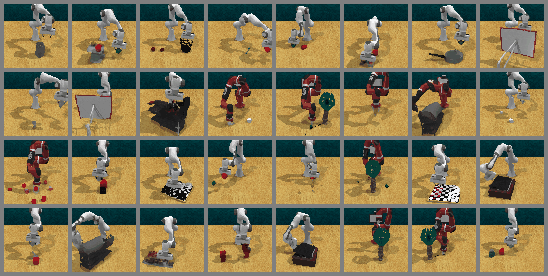TL;DR:
- UC Berkeley researchers present Video Prediction Rewards (VIPER) algorithm for reinforcement learning (RL).
- VIPER leverages pretrained video prediction models to create action-free reward signals.
- The traditional reward function design in RL is time-consuming and can have unintended consequences.
- VIPER enables RL agents to learn reward functions from raw films and generalize to new domains.
- Video model likelihoods serve as rewards, quantifying the temporal consistency of behavior.
- VIPER-trained RL agents achieve expert-level control without using task rewards.
- VIPER outperforms adversarial imitation learning and handles unseen task combinations.
- Big, pre-trained conditional video models could enable more flexible reward functions.
- The market can expect significant advancements in AI capabilities, benefiting decision-making agents.
Main AI News:
Developing efficient reinforcement learning (RL) algorithms has been a challenge in the quest for advanced decision-making agents. One major hurdle lies in designing appropriate reward functions, which are often time-consuming to craft and can lead to unintended consequences. However, UC Berkeley researchers have recently unveiled a groundbreaking solution that leverages pretrained video prediction models to overcome this roadblock: Video Prediction incentives for reinforcement learning (VIPER).
In traditional video-based learning methods, rewards are tied solely to the current observation, failing to capture meaningful activities over time. Furthermore, generalization is hindered by adversarial training techniques that result in mode collapse. VIPER, on the other hand, extracts incentives from raw films and enables RL agents to learn reward functions that generalize to untrained domains.
The process begins by utilizing expert-generated movies to train a prediction model. This video prediction model is then employed to train an RL agent with the objective of optimizing the log-likelihood of agent trajectories. The key is to minimize the distribution discrepancy between the agent’s trajectories and those of the video model. By directly using the video model’s likelihoods as a reward signal, the RL agent can be trained to follow trajectories similar to the video model’s behavior.
Notably, the rewards provided by video models go beyond the observational level, quantifying the temporal consistency of behavior. This approach not only facilitates quicker training timeframes but also allows for greater interactions with the environment. Since evaluating likelihoods is significantly faster than performing video model rollouts, the agent can efficiently learn from the expert-generated movies.
The results of extensive testing are impressive. Across a range of tasks, including 15 DMC tasks, 6 RLBench tasks, and 7 Atari tasks, VIPER-trained RL agents have demonstrated expert-level control without the need for task-specific rewards. In fact, they have even outperformed adversarial imitation learning, establishing the superiority of VIPER in the RL domain. Moreover, VIPER’s integration into the setting renders it agnostic to the specific RL agent used. The video models exhibit impressive generalizability, even handling arm/task combinations that were not encountered during training, all while working with relatively small datasets.
Looking to the future, the researchers believe that harnessing big, pre-trained conditional video models could unlock even more flexible reward functions. The recent advancements in generative modeling have laid the groundwork for scalable reward specification from unlabeled films, providing immense potential for the AI community.
Conclusion:
UC Berkeley’s VIPER algorithm marks a groundbreaking achievement in the field of business AI. By revolutionizing reward function design in reinforcement learning, VIPER paves the way for more efficient and robust decision-making agents. This development is poised to elevate the market’s AI capabilities, enabling businesses to achieve expert-level control without relying on labor-intensive hand-crafted rewards. As VIPER demonstrates its superiority over traditional methods, the business world can anticipate significant strides in AI application and automation, leading to improved operational efficiency and competitive advantage.

